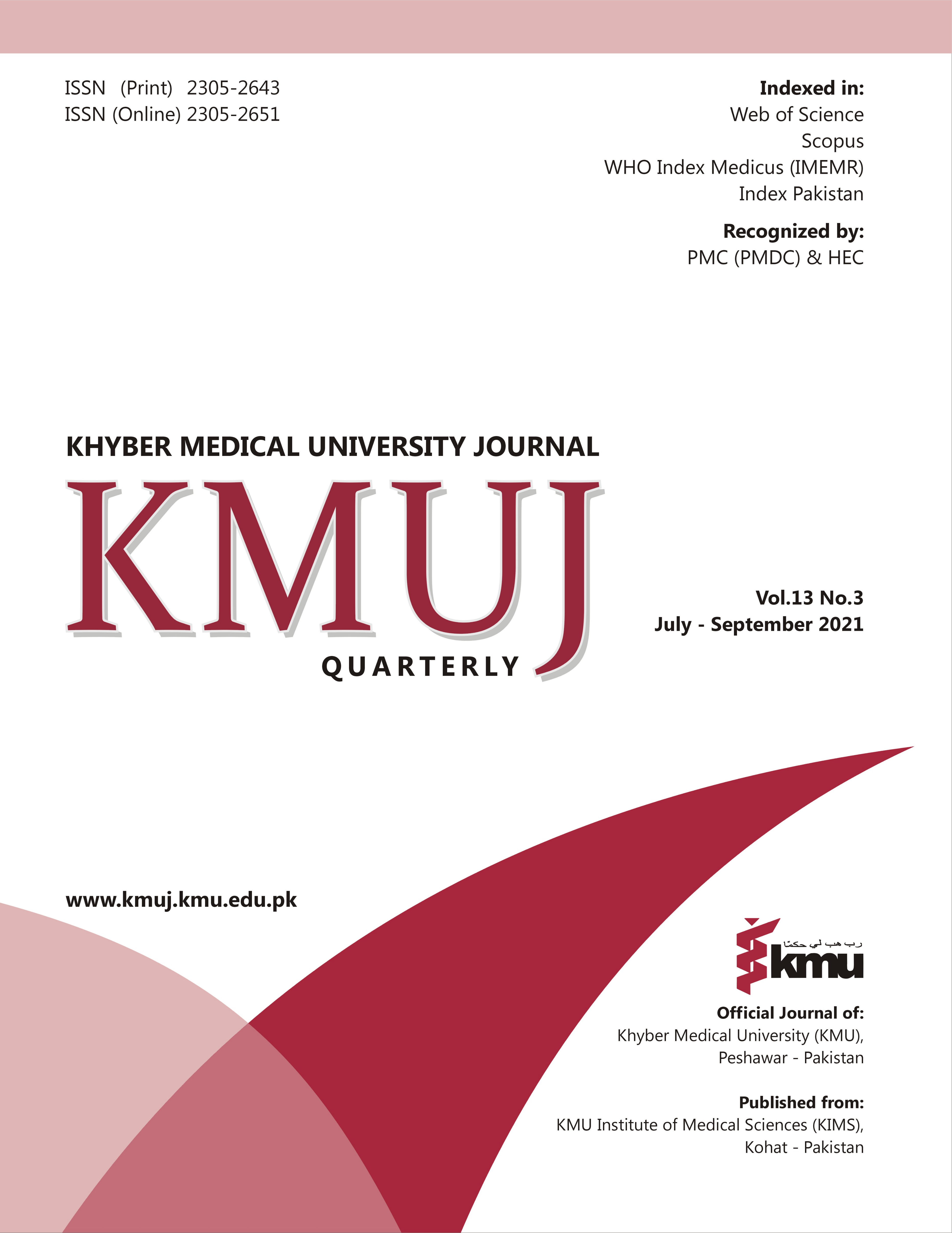REASONS FOR DIFFICULT TOPICS IN ANATOMY AND THEIR SOLUTIONS AS PER UNDERGRADUATE MEDICAL STUDENTS
Main Article Content
Abstract
OBJECTIVE: To identify the topics difficult to understand in learning Anatomy and to investigate the reasons of difficulty and their possible solutions.
METHODS: This descriptive observational study was conducted at Army Medical College, Rawalpindi, Pakistan from April to November 2019. Open ended and validated questionnaires were filled by 205 undergraduate medical students at the end of their academic year to ensure that complete course of anatomy including gross anatomy, histology and embryology were covered by students. Students were asked to specify the problem area, the subtopics, give the reasons for topics being difficult and mention possible solutions they think will help them in better understanding of these difficult areas. The problems having 5 or less number of responses were not included in the analysis.
RESULTS: Embryology, histology & neuroanatomy were perceived as the most difficult areas by 89%, 62% & 61% of students respectively. Constraint of time (41% for gross anatomy & 26% for embryology), high difficulty level (35% for embryology & 29% for gross anatomy) and difficulty in differentiation of slides (34% for histology) were the main reasons for problems in understanding the topics. Use of more 3-D aids (61%) & revision classes along with written tests (39%) were commonest possible solutions for perceived difficulties by students.
CONCLUSION: Embryology has been perceived as the most difficult topic of anatomy by the students of second year MBBS followed by gross anatomy and Histology. Time constrain was suggested as main reason and Use of 3-D aids as main solution for difficulties.
Article Details
Work published in KMUJ is licensed under a
Creative Commons Attribution 4.0 License
Authors are permitted and encouraged to post their work online (e.g., in institutional repositories or on their website) prior to and during the submission process, as it can lead to productive exchanges, as well as earlier and greater citation of published work.
(e.g., in institutional repositories or on their website) prior to and during the submission process, as it can lead to productive exchanges, as well as earlier and greater citation of published work.
References
Snell RS. Clinical anatomy by regions: Lippincott Williams & Wilkins; 2011.
Gole RA, Meshram P, Hattangdi S. Changes in perception about anatomy subject after 1st year of medical course. India J Basic Appl Med Res 2015;4(4):453-7. https://doi.org/10.22038/fmej.2019.40732.1269.
Kyung Won Chung PD, Harold M.Chung MD. Gross Anatomy. 7th ed. Baltimore Philadelphia: Lippincott Williams and Wilkins; 2012.
Cormack DH. Essential histology. 2nd ed. Lippincott Williams & Wilkins; 2001.
Goffinet AM. What Makes us Human? A Biased View from the Perspective of Comparative Embryology and Mouse Genetics. J Biomed Discov Collab 2006;1: 16. https://doi.org/ 10.1186/1747-5333-1-16.
Kramer B, Soley J. Medical student perception of problem topics in anatomy. East Afr Med J 2002;79(2):408-14. http://doi.org/10.4314/eamj.v79i8.8826.
Hossain S, Shamim K, Shahana N, Habib M, Rahman A. Is English as a medium of instruction problem for undergraduate medical students? J Armed Forces Med Coll Bangladesh 2010;6(2):32-6. https://doi.org/10.3329/jafmc.v6i2.7272.
Anderton R, Chiu L, Aulfrey S. Student perceptions to teaching undergraduate anatomy in health sciences. Int J High Educ 2016;5(3) 201-16. http://dx.doi.org/10.5430/ijhe.v5n3p.
Sturges D, Mauner T. Allied health students’ perceptions of class difficulty: the case of undergraduate human anatomy and physiology classes. Internet J Allied Health Sci Pract 2013;11(4):9.
Carlson BM. Embryology in the medical curriculum. Anat Rec 2002;269(2):89-98. https://doi.org/10.1002/ar.10075.
Hamilton J, Carachi R. Clinical embryology: is there still a place in medical schools today? Scott Med J 2014;59(4):188-92. https://doi.org/10.1177/0036933014550953.
Kazzazi F, Bartlett J. Condensing embryology teaching for medical students: can it be taught in 2 hours? Adv Med Educ Pract 2017;8:797-806. https://doi.org/10.2147/amep.s151880.
Hall S, Stephens J, Parton W, Myers M, Harrison C, Elmansouri A, et al. Identifying medical student perceptions on the difficulty of learning different topics of the undergraduate anatomy curriculum. Med Sci Educ 2018;28:469-72.
Pandey P, Zimitat C. Medical students' learning of anatomy: memorisation, understanding and visualisation. Med Educ 2007;41(1):7-14. https://doi.org/10.1111/j.1365-2929.2006.02643.x.
Murgitroyd E, Madurska M, Gonzalez J, Watson A. 3D digital anatomy modelling–Practical or pretty? Surgeon 2015;13(3):177-80.
Balemans MC, Kooloos JG, Donders ART, Van der Zee CE. Actual drawing of histological images improves knowledge retention. Anat Sci Educ 2016;9(1):60-70.
Rafi A, Rauf A, Anwar MI. Significance of actually drawing microscopic images and its impact on students' understanding of histology. J Dow Uni Health Sci 2017;11(3):77-81. http://doi.org/10.36570/jduhs.2017.3.540.
Rafi A, Rauf A, Anwar MI. Effect of Drawing Microscopic Images on Students' Retention of Knowledge of Histology. Pak J Med Res 2018;57(3):121-24.
Hillhouse K. Bring Your Own Device Initiative to Improve Engagement and Performance in Human Anatomy and Physiology I and II Laboratories: The University of Mississippi; 2017.
